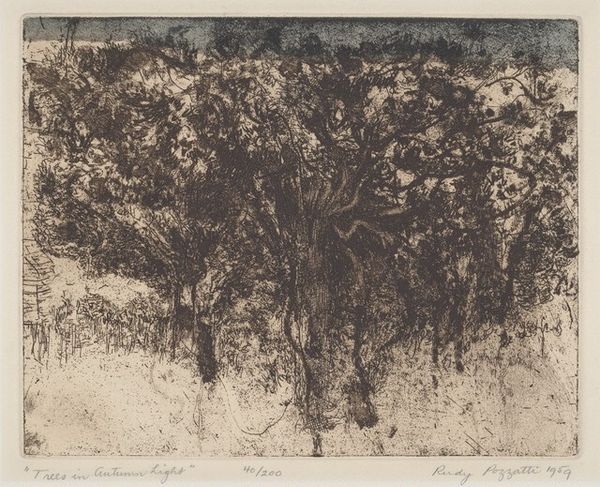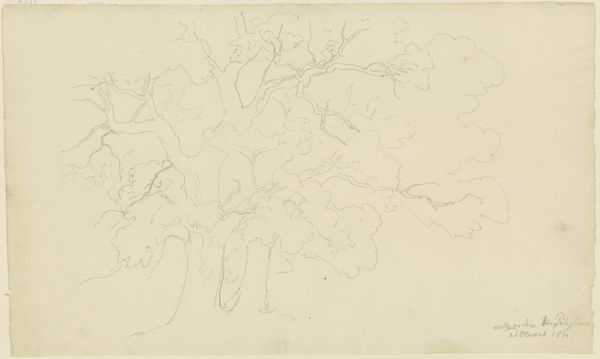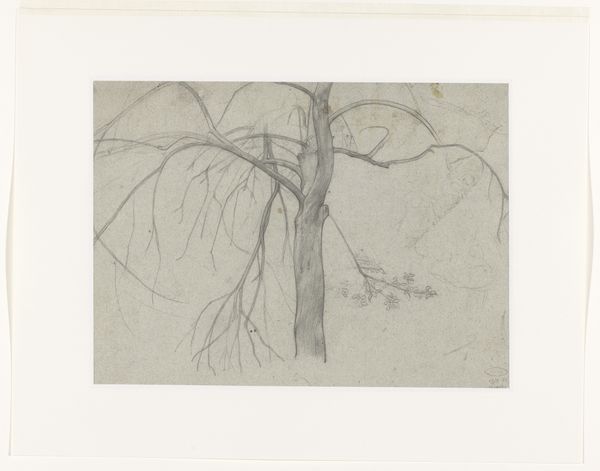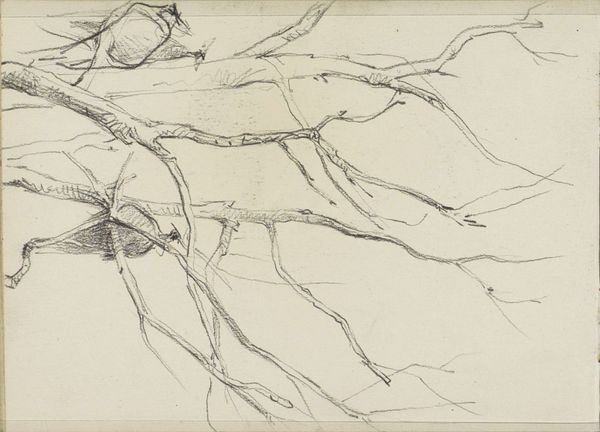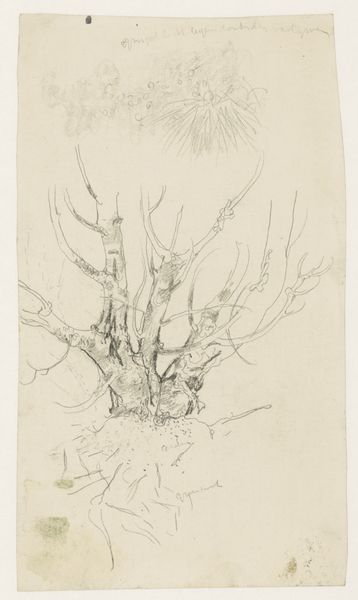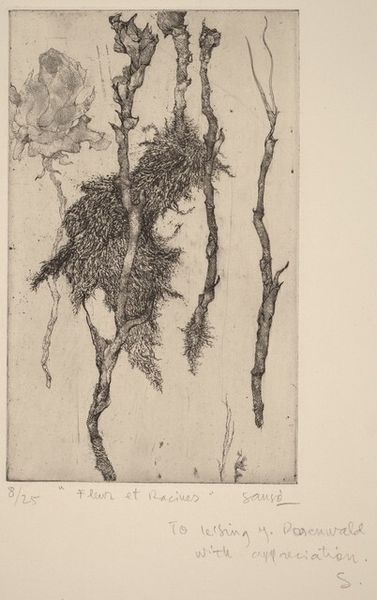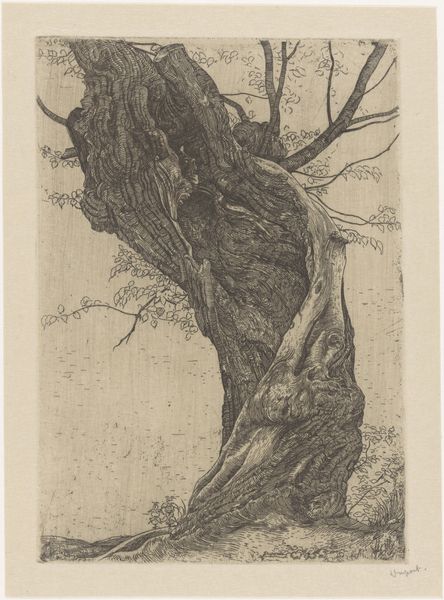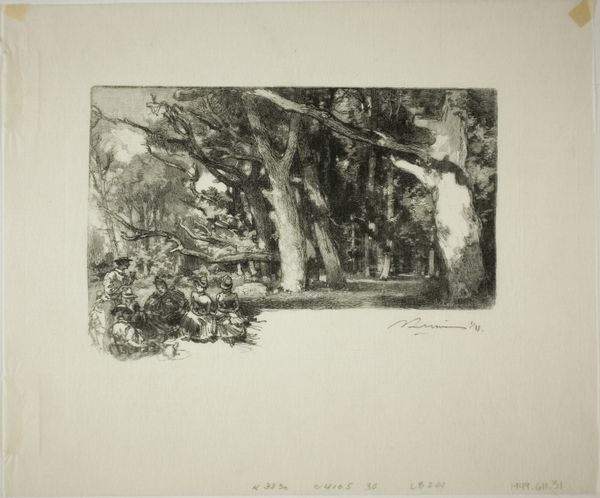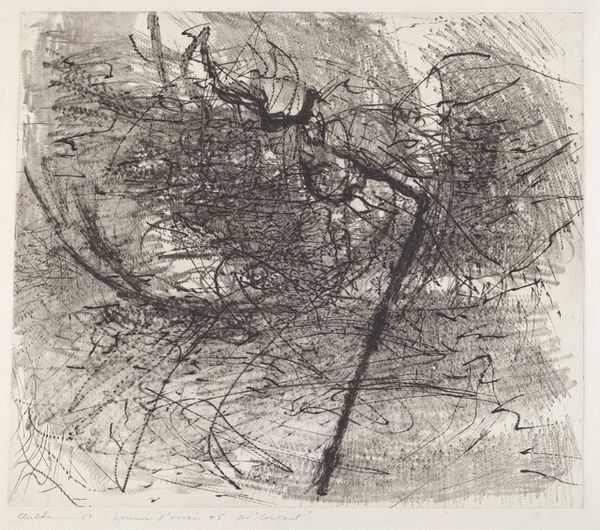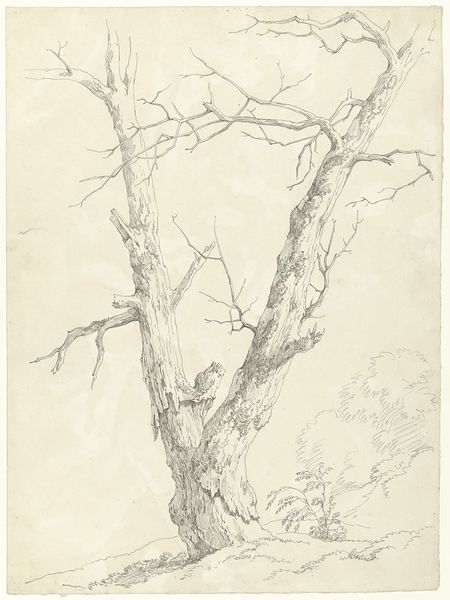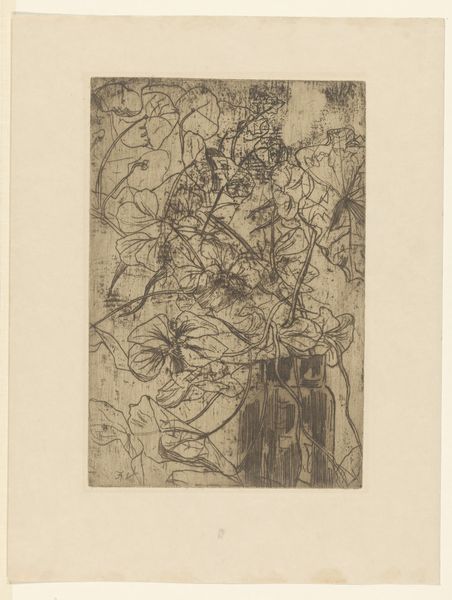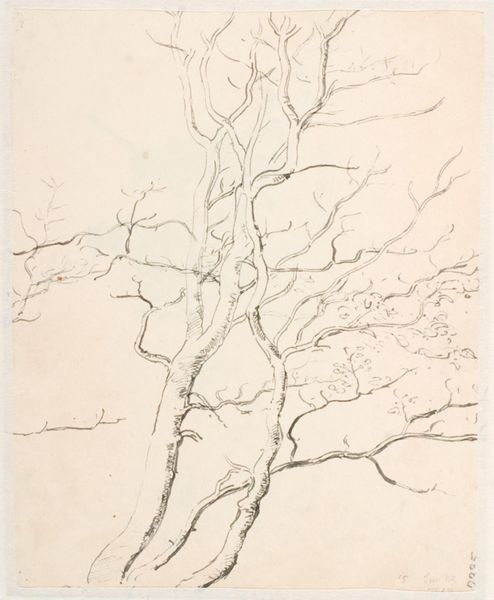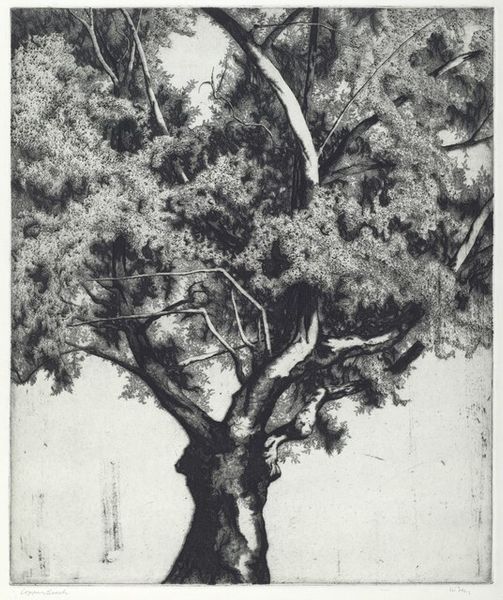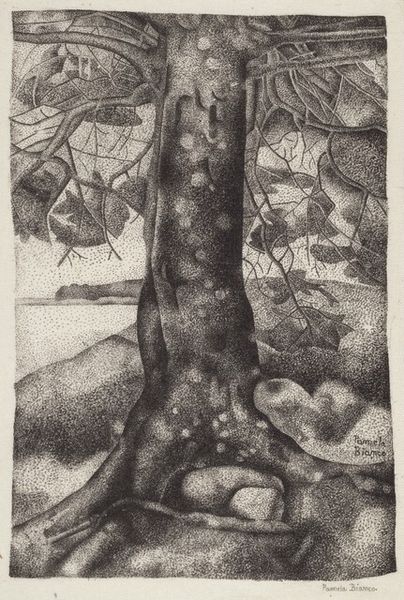
drawing, print, etching
#
tree
#
drawing
# print
#
etching
#
landscape
Copyright: National Gallery of Art: CC0 1.0
Editor: We are looking at Jay Moon's 1975 etching titled "Autumn Haiku." The stark branches really grab you. What underlying message do you see embedded within the visual representation of this leafless tree? Curator: I'm drawn to the artist's deliberate use of stark lines and muted tones. In my opinion, this aesthetic embodies a complex statement about fragility, ecological anxiety, and resilience. The near skeletal depiction of the tree, in the mid-1970s, sits squarely within the rise of environmental activism and growing concern about deforestation. Can the image evoke that in the contemporary experience? Editor: I think it can! The starkness almost suggests the violence of deforestation… the skeletal quality really resonates with me. Curator: Absolutely. The artist also invites a conversation on the social ramifications of environmental destruction, particularly how marginalized communities often bear the brunt. Consider how the term "haiku" typically conjures ideas of beauty and tranquility; Moon’s title could suggest a tension between an idealized vision of nature versus our present reality. How does this contrast impact your understanding of the work? Editor: I see your point. "Haiku" leads you to expect something gentle, but this is more like a warning. It is as though beauty itself is being threatened. Curator: Exactly. I wonder if it can inspire more eco-conscious thinking, given its historical context and lasting appeal. Editor: I never would have looked at it that way, seeing it as a type of historical activist message! Thanks for broadening my perspective! Curator: And thank you for bringing fresh eyes to the work; considering how younger generations view older pieces brings it full circle!
Comments
No comments
Be the first to comment and join the conversation on the ultimate creative platform.
